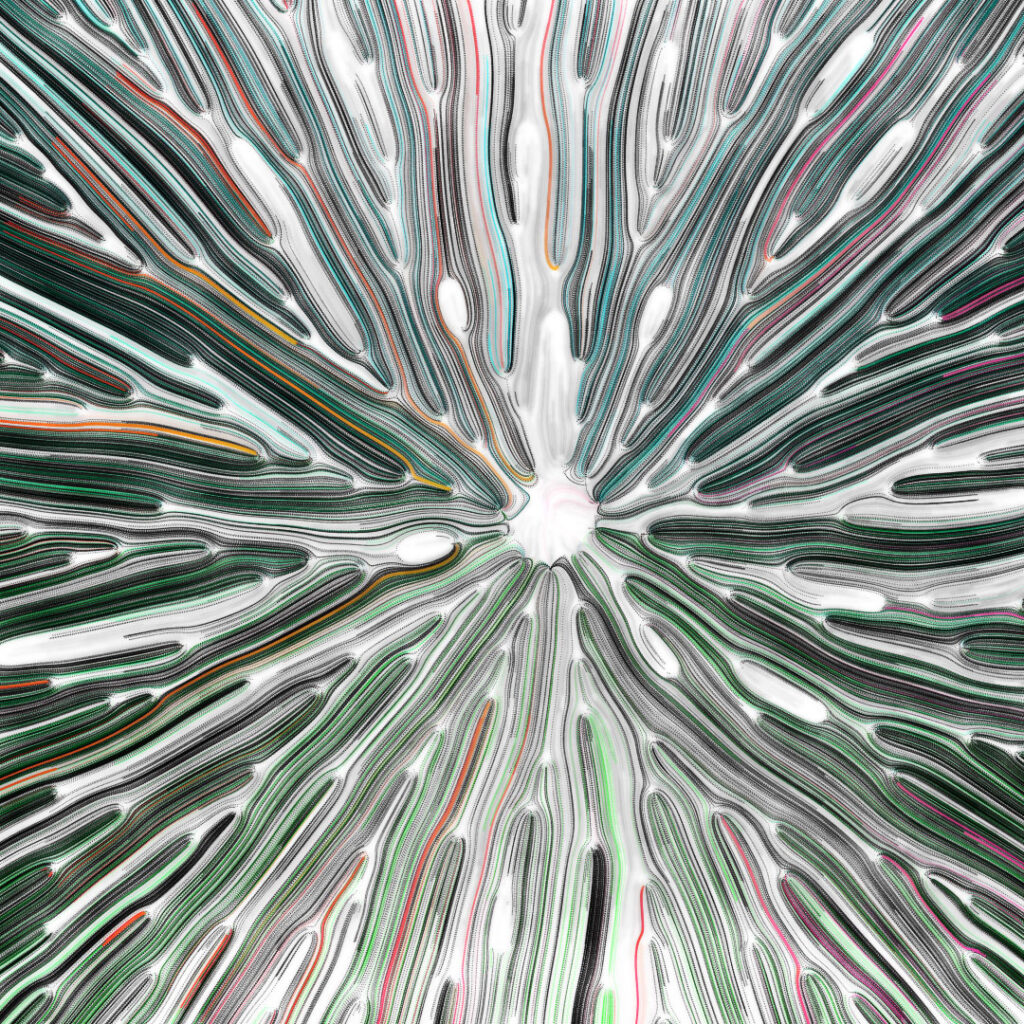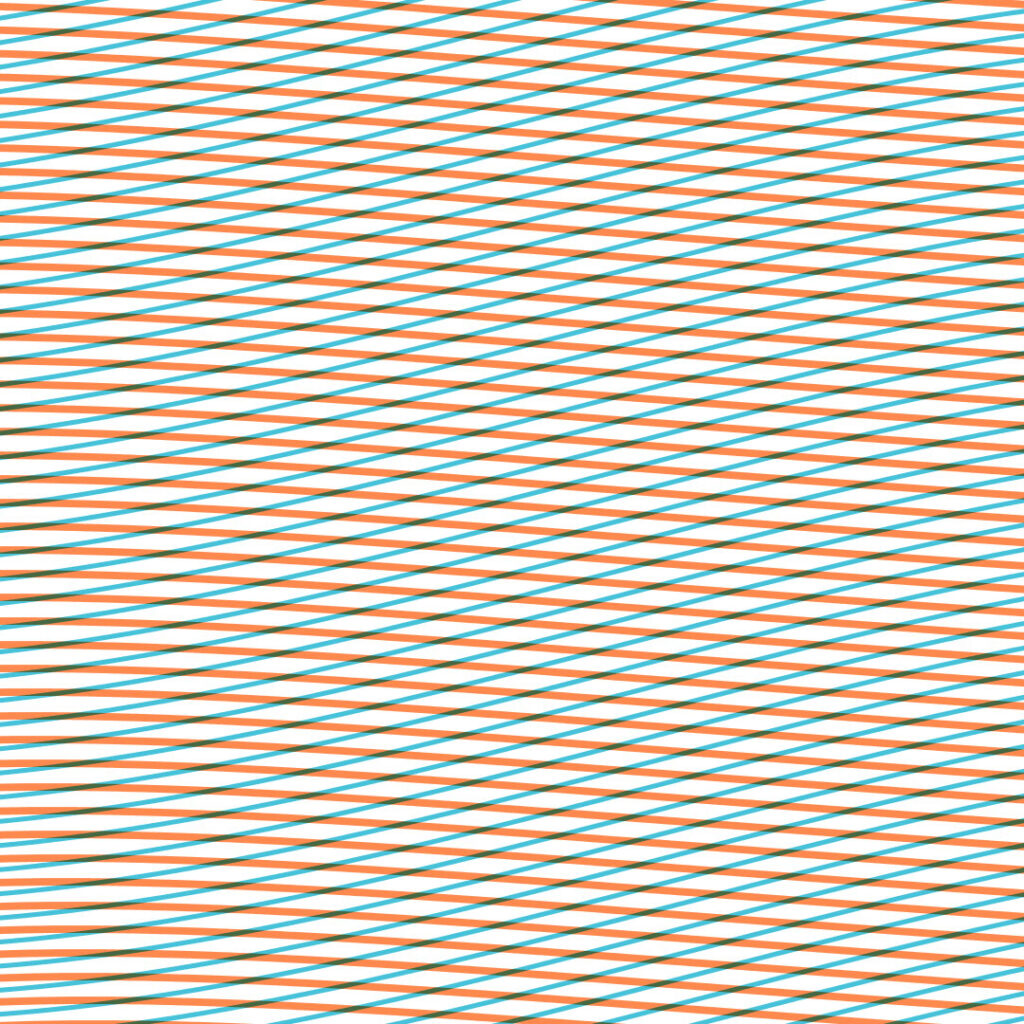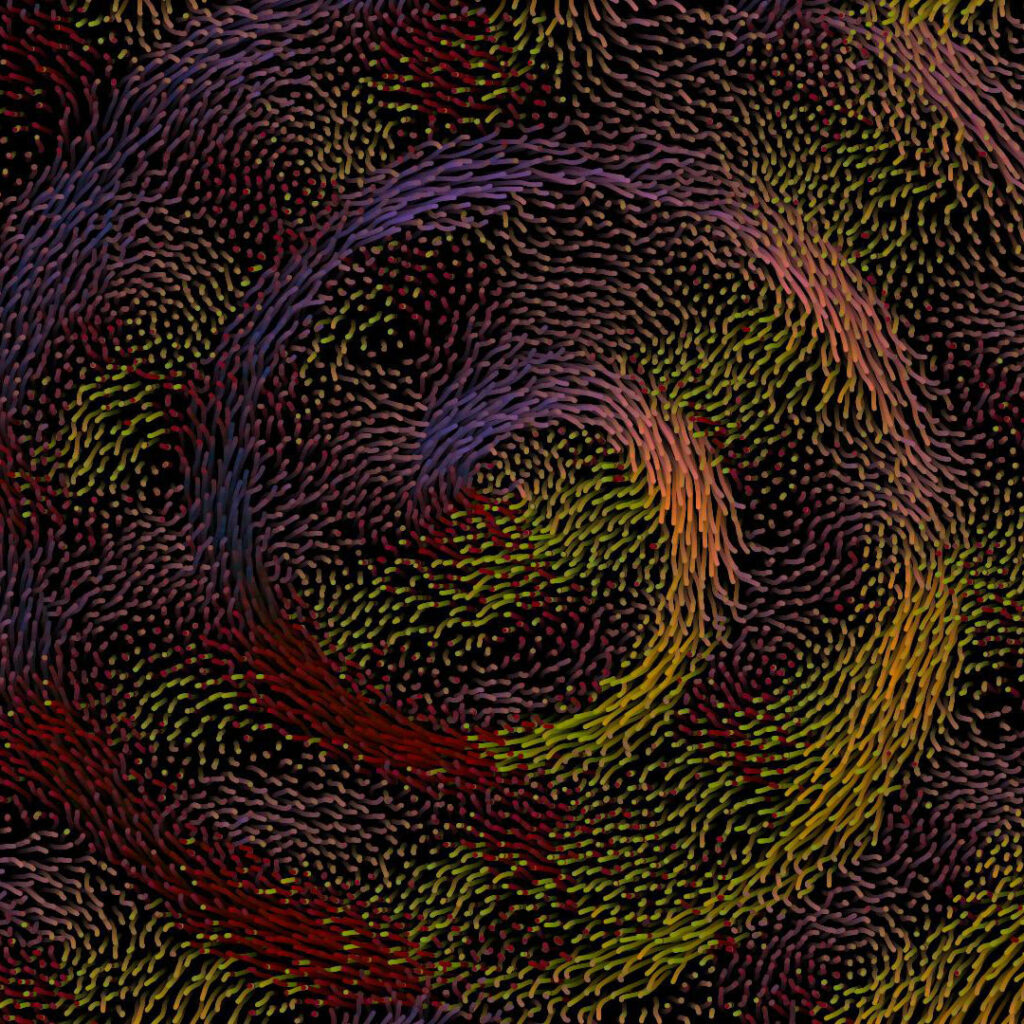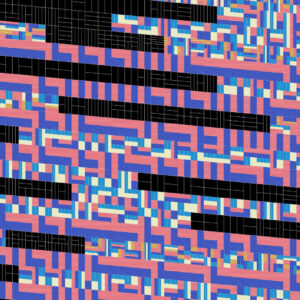INTERVIEW
MATH IS IN THE AIR
Nov 2017
I was interviewed by Davide, the coordinator of the Italian blog Math is in the Air, a wonderful project whose aim is to explain people what applied mathematics is. He asked me many questions about the project Spaghetti Coder, a multimedia project I started in January 2015 in the area of Generative Art in order to explore new boundaries in audiovisual expression through creative coding.
LINK: http://www.mathisintheair.com/
Q1. Your project blends together arts and mathematics. How did you come up with such an interesting idea?
I’ve always been amazed by the beauty of nature and its wonderful patterns: symmetries, spirals, meanders, waves, cracks or stripes. At the very beginning I started creating artworks with basic geometry and fractals, but later I discovered the possibilities of using randomness, physics, autonomous systems, data or interaction to get more expressive and meaningful artwork.
My goal as a generative artist and experimental animator is to create autonomous systems that make the essence of nature’s beauty emerge by modeling not only its appearance but its behavior. Mathematics, physics and computation are essential tools to implement a set of rules that an autonomous system must follow to simulate nature’s appearance and behavior.
Q2. Why is your project called “spaghetti coder”?
When I started this project I had in mind so many different ideas related to generative art and creative processes, and I was willing to explore them. But I had no idea what path to follow. “Spaghetti coding” is a pejorative phrase in programming world to refer to a piece of code that has a complex and tangled control structure. So basically I called the website “Spaghetti Coder” because it just reflected my state of mind at the beginning of the project.

Q3. Is the project inspired to contemporary artists or artists of the past?
“Spaghetti coder” is a creative and experimental art project inspired by generative artists from the past century such as Ellsworth Kelly, Sol LeWitt or François Morellet, but using not only chance as a main generator but physics, agents, data or interaction.
I got inspired by the essence of pioneers in Generative Art and I’m trying to evolve that conceptual vision using nowadays tools (programming, media, data, IOT) and exploring how it suits in experimental animation world.
Q4. What mathematical tools do you use to create your artworks and what programming languages?
Depending on the nature of the artwork I’m developing at the moment, I use many different mathematical tools: trigonometry, vector spaces and calculus, operators and matrices, densities and distributions, combinatorics, graph theory …
And I usually write my code using programming languages such as Java, Processing, C++, openFrameworks and GLSL to generate visual products (drawings, animations, 3d graphics), or SuperCollider and Chuck to compose algorithmic audio (soundtracks, audio effects).
When I use different programs that work together or there’s some kind of user interaction through hardware (MIDI controller, instrument or IOT device), a communication protocol is required. Then I frequently use OSC, MIDI or DMX protocols.

Q5. What is your favorite artwork among the ones showcased on your website? Can you tell us why?
AAAC (An Autonomous Agent Choreo) is my favorite artwork by now. It is an abstract generative animation video created through code and user interaction in which a flock of autonomous agents governed by physical laws of attraction-repulsion is subjected to the will of a geometric choreography.
Throughout the audiovisual piece the flock of autonomous agents is distributed against nature into different geometric patterns which vary the general perception of color, shape, texture and rhythm. The soundtrack is also a generative audio created through code and user interaction in which the movement and bustle of the flock of autonomous agents generates its own musical score.
I think I was able to make some kind of rhythm emerge through the motion and sound of +5.000 autonomous agents and in the end it suggested many interesting variations in the global perception of basic elements of design (color, shape and texture).
I’m also really happy with people’s feedback and how AAAC worked in animation festivals. It has been screened at many of them: CutOut Fest, SIMULTAN, Tasmanian International Video Art Festival, Seoul International Cartoon & Animation Festival, Azores Fringe Festival, Bogotá Experimental Film Festival, Punto y Raya Festival, …

There’s no content to show here yet.
